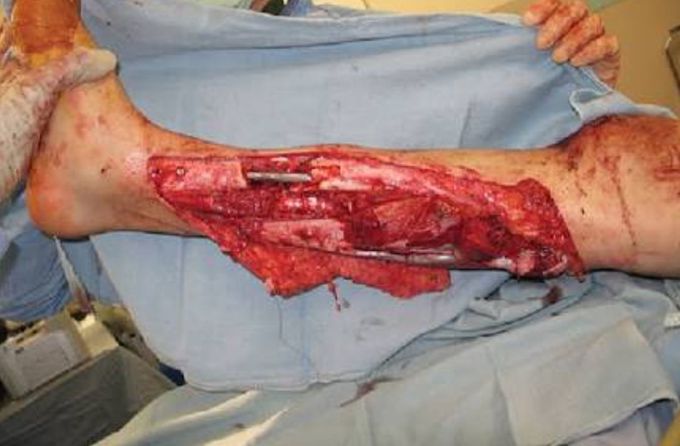


AN EXTREME TRAUMA CASE
The term “mangled extremity” refers to an injury to an extremity so severe that the viability of the limb is often questionable and loss of the limb a likely outcome. The mangled extremity has been previously defined as a complex fracture with additional involvement of at least two of the following: artery, tendon, nerve, or soft tissue (skin, fat, and muscle). This injury is always a result of high-energy trauma caused by some combination of crush, shear, and/or blast. Associated fractures usually verify the high-energy forces of the mechanism of injury by exhibiting extensive comminution patterns frequently a result of a combination of threepoint bending, axial load, and torsional forces imparted to the extremity. The skin is often degloved with large areas of loss secondary to avulsion or ischemia and the fascial compartments are typically incompletely opened by explosion or tear. Muscles are typically damaged at both local and regional levels by direct as well as indirect injury.

